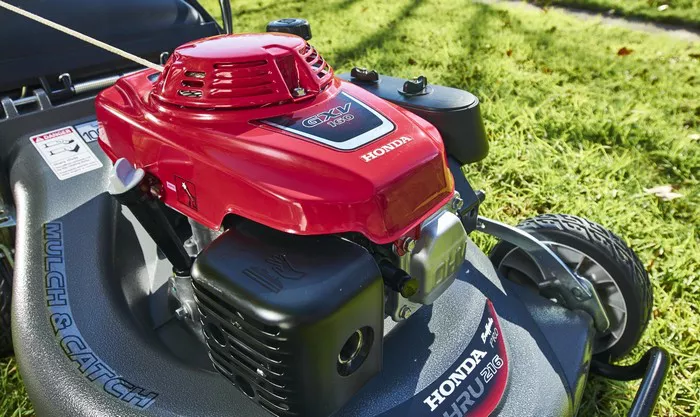A well-maintained lawn enhances the aesthetic appeal of any property, and proper lawn care requires the right tools. Among the various types of lawn mowers available, self-propelled lawn mowers stand out for their ease of use and efficiency. These mowers are designed to move forward on their own, requiring minimal effort from the user. In this article, we will explore the working principles, components, advantages, types, and maintenance of self-propelled lawn mowers.
How Self-Propelled Lawn Mowers Work
Unlike traditional push mowers, self-propelled lawn mowers utilize an engine-driven system that powers the wheels, reducing the need for manual pushing. This is achieved through a combination of an internal combustion engine (or electric motor), a transmission system, and a drive mechanism.
Key Working Principles:
Power Source: Self-propelled mowers are powered by gasoline engines or electric motors. Gas-powered models typically have a 4-stroke engine, whereas electric models use rechargeable lithium-ion batteries.
Drive Mechanism: The engine or motor transfers power to the wheels via a belt, gearbox, or direct drive system.
Speed Control: Most models feature variable speed controls, allowing users to adjust the pace according to their comfort level and the lawn’s condition.
Blade Operation: A rotating blade cuts the grass while the mower moves forward under its own power.
User Guidance: The operator simply guides the mower in the desired direction without the need to push it manually.
Components of a Self-Propelled Lawn Mower
Understanding the essential components of a self-propelled lawn mower can help in selecting the right model and maintaining it effectively.
Engine/Motor – Provides power to the cutting blades and the drive wheels.
Transmission System – Transfers power from the engine to the wheels. It can be belt-driven or hydrostatic.
Wheels and Drive System – Equipped with either front-wheel drive (FWD), rear-wheel drive (RWD), or all-wheel drive (AWD) for different terrains.
Cutting Deck – Houses the rotating blades and determines the cutting width.
Height Adjustment Mechanism – Allows users to change the cutting height to suit different grass lengths.
Handle and Controls – Used to guide the mower and control speed, height adjustment, and power.
Grass Collection System – Some models have a bagging system to collect clippings, while others offer mulching or side-discharge options.
Types of Self-Propelled Lawn Mowers
1. Front-Wheel Drive (FWD) Mowers
- Best suited for flat terrain.
- Easier to maneuver and turn.
- Ideal for small to medium-sized lawns.
2. Rear-Wheel Drive (RWD) Mowers
- Provide better traction on uneven or sloped terrain.
- Require slightly more effort to turn.
- Suitable for larger lawns and tougher grass conditions.
3. All-Wheel Drive (AWD) Mowers
- Offer maximum traction on hilly or rough terrains.
- Typically more expensive but highly efficient.
- Recommended for homeowners with large and complex landscapes.
Advantages of Self-Propelled Lawn Mowers
Reduced Physical Effort – The self-propelling mechanism eliminates the need for pushing, making lawn mowing less strenuous.
Efficiency – These mowers cut grass faster compared to push mowers, reducing mowing time.
Consistent Cutting – Maintains an even cut, improving the overall appearance of the lawn.
Better for Large Yards – Designed for larger properties where push mowers would require excessive effort.
Improved Traction and Control – Useful for handling slopes, rough patches, and uneven terrain.
Limitations of Self-Propelled Lawn Mowers
Higher Cost – More expensive than manual push mowers.
Increased Maintenance – Additional components like drive belts and transmission require maintenance.
Weight – Heavier than push mowers due to added mechanisms, making transportation difficult.
Fuel or Battery Dependency – Gasoline-powered models require fuel and regular maintenance, while electric models depend on battery life.
Maintenance and Care for Self-Propelled Lawn Mowers
Proper maintenance ensures longevity and optimal performance. Here are essential maintenance tips:
1. Engine Maintenance
- Regularly change the engine oil.
- Clean or replace the air filter.
- Inspect and replace the spark plug as needed.
2. Blade Care
- Sharpen the blades regularly for a clean cut.
- Replace damaged or dull blades.
3. Drive System Maintenance
- Check the drive belt for wear and tear.
- Lubricate moving parts for smooth operation.
4. Cleaning and Storage
- Remove grass clippings from the cutting deck after each use.
- Store the mower in a dry, covered area to prevent rust and corrosion.
5. Battery Maintenance (for Electric Models)
- Charge the battery as recommended by the manufacturer.
- Store batteries in a cool, dry place during off-seasons.
Choosing the Right Self-Propelled Lawn Mower
Selecting the right mower depends on several factors:
Lawn Size – Large lawns may require a wider cutting deck for efficiency.
Terrain – Hilly or uneven terrain benefits from RWD or AWD models.
Budget – Prices vary based on features and brand.
Power Source – Gas mowers offer longer runtime, while electric models provide eco-friendly operation.
Additional Features – Consider features like mulching capability, adjustable speeds, and ergonomic handles.
Conclusion
Self-propelled lawn mowers offer a convenient and efficient solution for maintaining lawns with minimal effort. With their advanced drive mechanisms and various cutting options, they cater to different lawn conditions and user preferences. By understanding their working principles, types, benefits, and maintenance requirements, homeowners and lawn care professionals can make informed decisions when selecting and using these mowers. Investing in a high-quality self-propelled lawn mower ensures a well-kept lawn with reduced manual labor, making yard work easier and more enjoyable.

